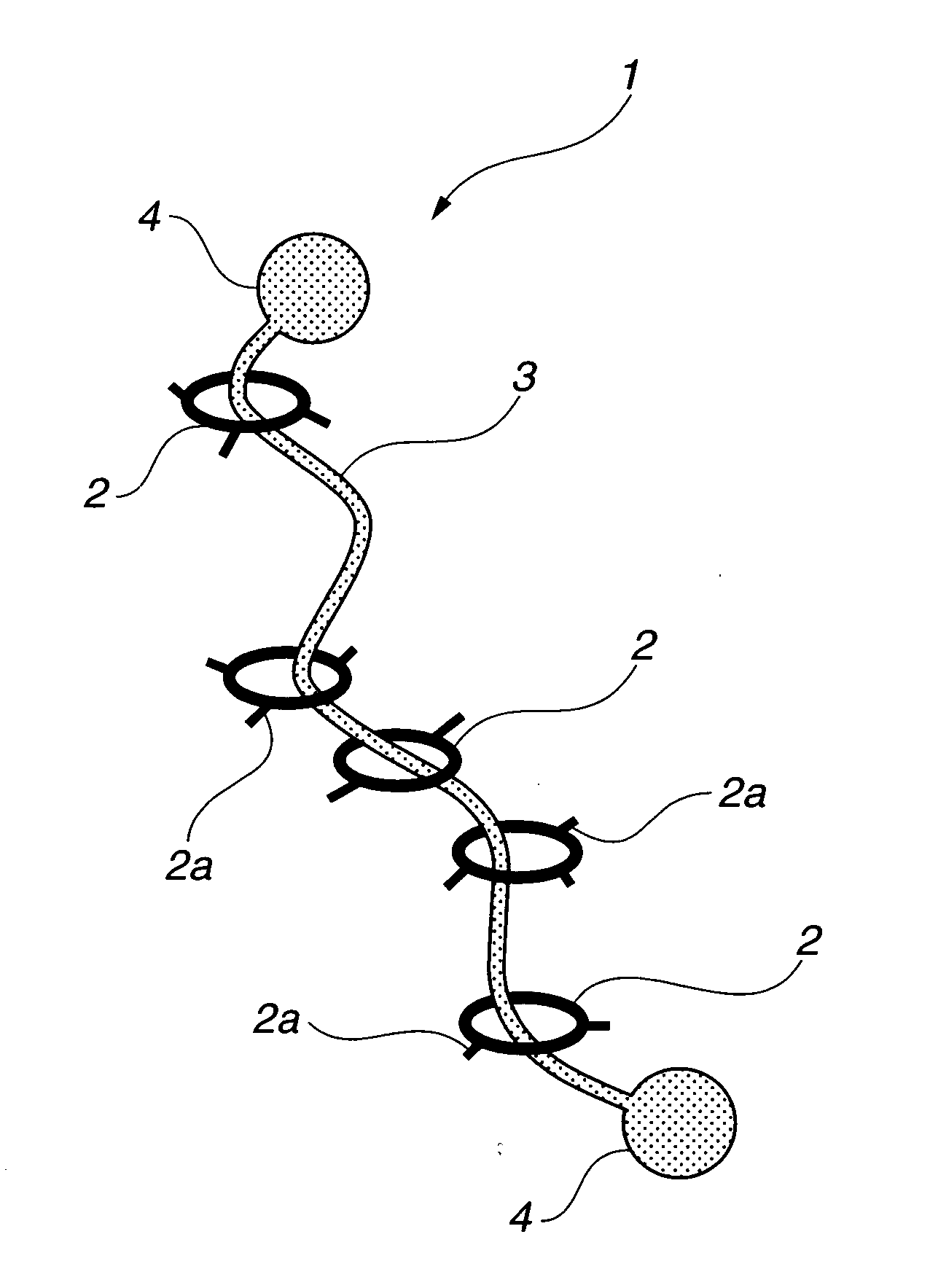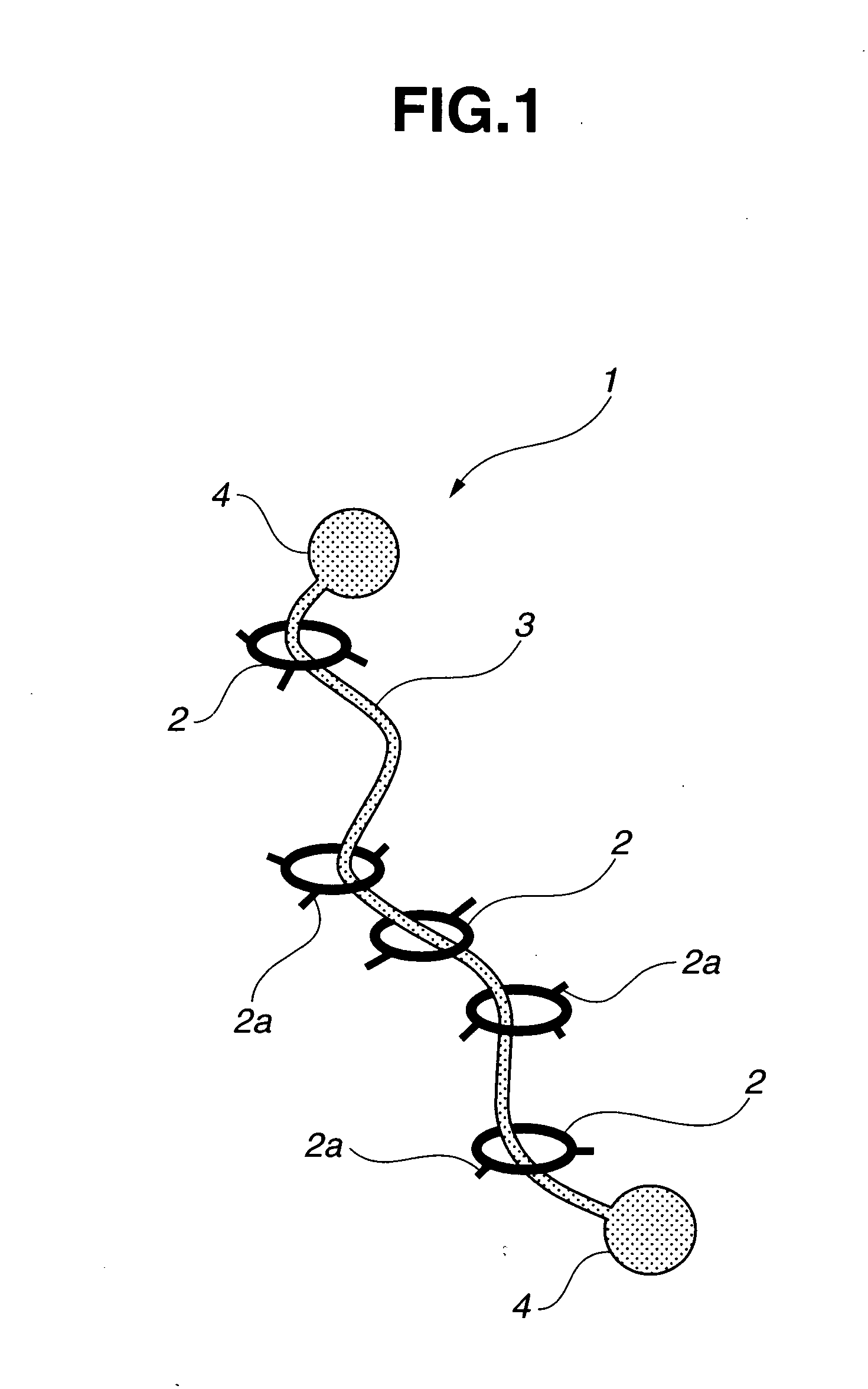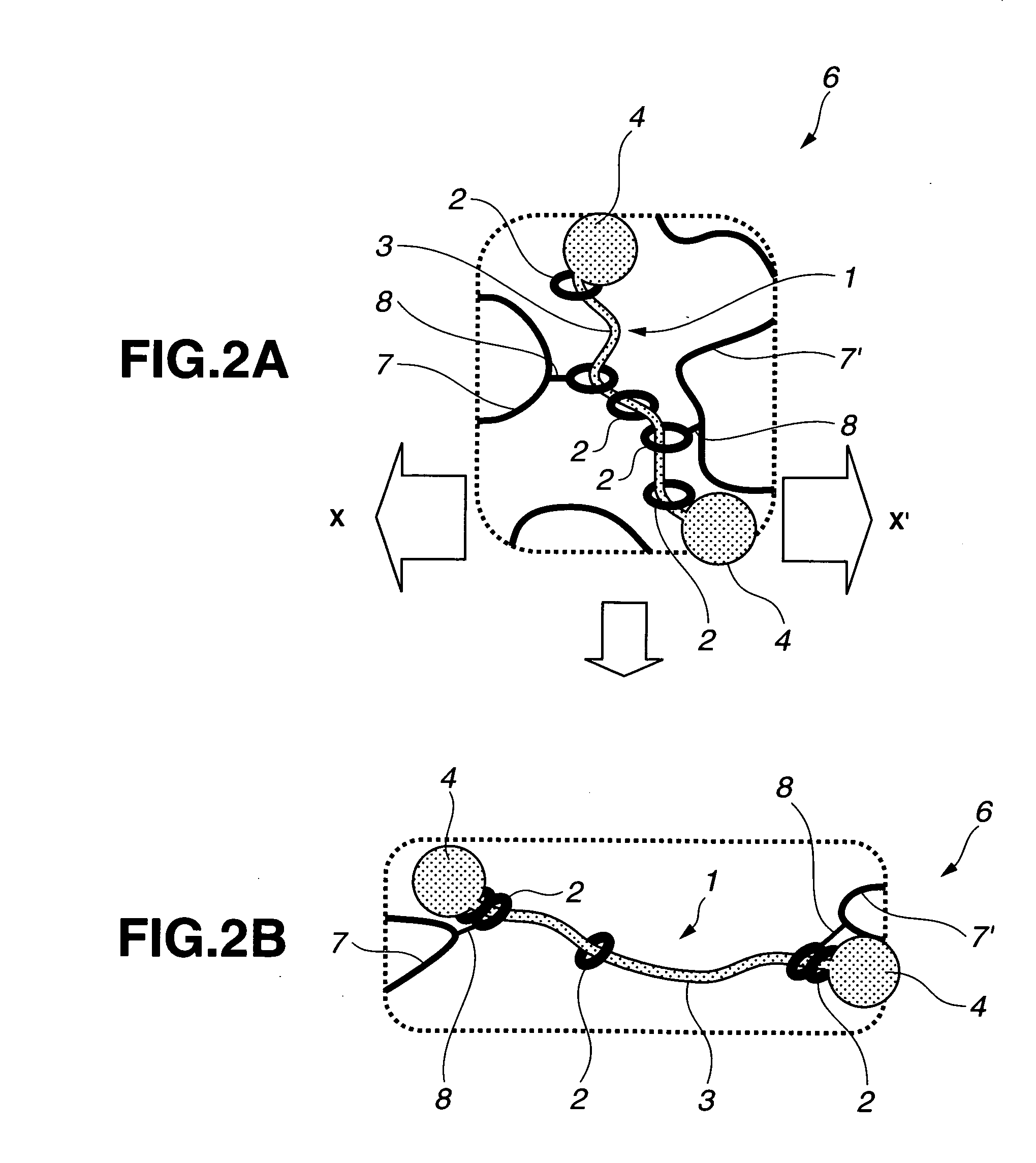Material for Curable Aqueous Overcoating Material and Coating Material Using Same
a technology of overcoating material and coating material, which is applied in the direction of cellulosic plastic layered products, synthetic resin layered products, transportation and packaging, etc., can solve the problems of reducing the adhesion to the substrate, metal mirror finishing and the surface treatment films of room-temperature drying coatings and two-liquid urethane coatings are likely to be damaged remarkably. to achieve the effect of improving abrasion and chipping
- Summary
- Abstract
- Description
- Claims
- Application Information
AI Technical Summary
Benefits of technology
Problems solved by technology
Method used
Image
Examples
example 1
(1) Preparation of PEG-Carboxylic Acid by TEMPO Oxidation of PEG
[0068]First, 10 g of polyethylene glycol (PEG) (molecular weight: 1000), 100 mg of TEMPO (2,2,6,6-tetramethyl-1-piperidinyl oxy radical) and 1 g of sodium bromide were dissolved in 100 ml of water, followed by adding thereto 5 ml of commercially-available aqueous sodium hypochlorite solution (effective chlorine concentration: 5%) and stirring the resulting solution for 10 minutes at room temperature. In order to decompose residual sodium hypochlorite, up to 5 ml of ethanol was added to the solution. With this, the reaction was completed. Any components other than inorganic salts were extracted with 50 ml of methylene chloride three times from the solution. The methylene chloride extractant was removed by distillation with an evaporator. The distillation residue was then dissolved in 250 ml of hot ethanol and placed in a refrigerator (−4° C.) for one night to extract PEG-carboxylic acid only. The extracted PEG-carboxylic...
examples 2-8
[0074]Curable aqueous clear coating compositions were prepared in the same way as in Example 1, except for the compositional specifications as indicated in TABLE 1. Further, laminated coating films were formed using the prepared clear coating compositions.
example 9
(1) Preparation of PEG-Carboxylic Acid by TEMPO Oxidation of PEG
[0075]First, 10 g of polyethylene glycol (PEG) (molecular weight: 35000), 100 mg of TEMPO (2,2,6,6-tetramethyl-1-piperidinyl oxy radical) and 1 g of sodium bromide were dissolved in 100 ml of water, followed by adding thereto 5 ml of commercially-available aqueous sodium hypochlorite solution (effective chlorine concentration: 5%) and stirring the resulting solution for 10 minutes at room temperature. In order to decompose residual sodium hypochlorite, up to 5 ml of ethanol was added to the solution. With this, the reaction was completed. Any components other than inorganic salts were extracted with 50 ml of methylene chloride three times from the solution. The methylene chloride extractant was removed by distillation with an evaporator. The distillation residue was then dissolved in 250 ml of hot ethanol and placed in a refrigerator (−4° C.) for one night to extract PEG-carboxylic acid only. The extracted PEG-carboxyli...
PUM
| Property | Measurement | Unit |
|---|---|---|
| thickness | aaaaa | aaaaa |
| thickness | aaaaa | aaaaa |
| thickness | aaaaa | aaaaa |
Abstract
Description
Claims
Application Information
 Login to View More
Login to View More - R&D
- Intellectual Property
- Life Sciences
- Materials
- Tech Scout
- Unparalleled Data Quality
- Higher Quality Content
- 60% Fewer Hallucinations
Browse by: Latest US Patents, China's latest patents, Technical Efficacy Thesaurus, Application Domain, Technology Topic, Popular Technical Reports.
© 2025 PatSnap. All rights reserved.Legal|Privacy policy|Modern Slavery Act Transparency Statement|Sitemap|About US| Contact US: help@patsnap.com



